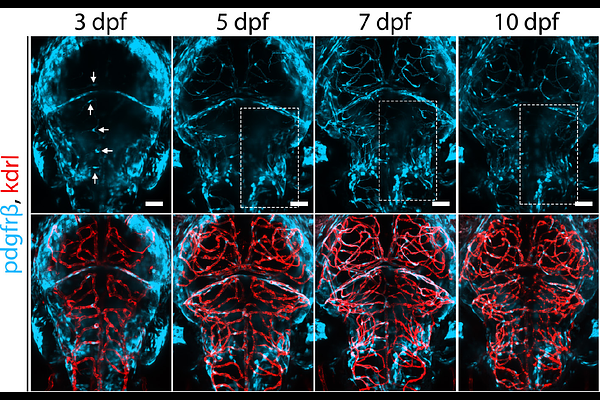Progressive mural cell deficiencies across the lifespan in a foxf2 model of Cerebral Small Vessel Disease

Progressive mural cell deficiencies across the lifespan in a foxf2 model of Cerebral Small Vessel Disease
Graff, M. F. E.; Heeg, E. E.; Childs, S. J.
AbstractWhile developmental origins are suspected for many adult diseases, the lifespan effects of developmental perturbations have not been well studied. Cerebral Small Vessel Disease (SVD) is a leading cause of stroke and dementia and yet is often an incidental finding in aged patients due to the inaccessibility of brain vasculature to imaging of small vessels. In humans, reduced FOXF2 is associated with an increased stroke risk and SVD. We use a zebrafish partial foxf2 loss of function to model its effect on small vessel biology through development and aging. In the zebrafish, foxf2 is expressed in brain vascular pericytes and promotes vascular stability. We find that the initial pool of pericytes in developing foxf2a mutants is strongly reduced without affecting the endothelial network. The few brain pericytes present in mutants have strikingly longer processes and enlarged soma. foxf2a mutant pericytes can partially repopulate the brain after genetic ablation suggesting some recovery is possible. Nonetheless, adult foxf2a mutant brains show regional heterogeneity, with areas of normal pericyte coverage of vessels, but others with severe pericyte depletion. Both pericyte and endothelial morphology is strongly affected in adults. Taken together, foxf2a mutants fail to generate a sufficient initial population of pericytes and the few pericytes remaining have abnormal cell morphology. Over the lifespan foxf2a loss leads to severely abnormal cerebrovasculature. Our work opens new understanding of the progression of genetic forms of human Cerebral Small Vessel Disease.